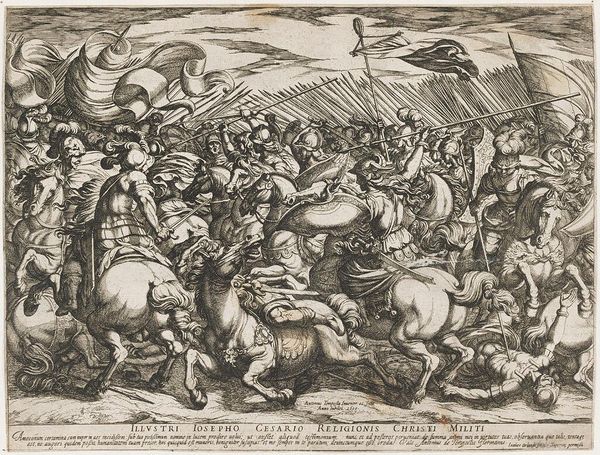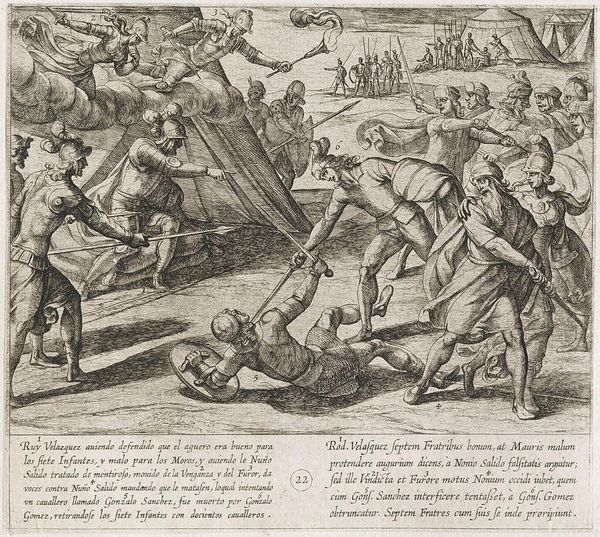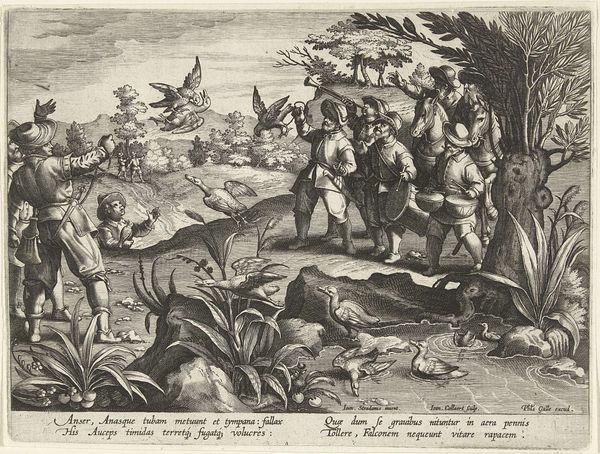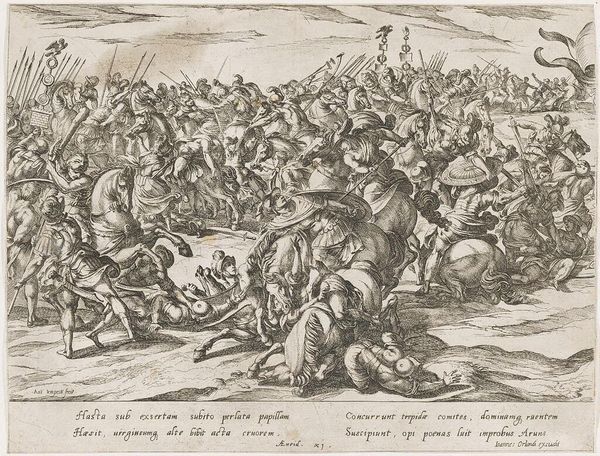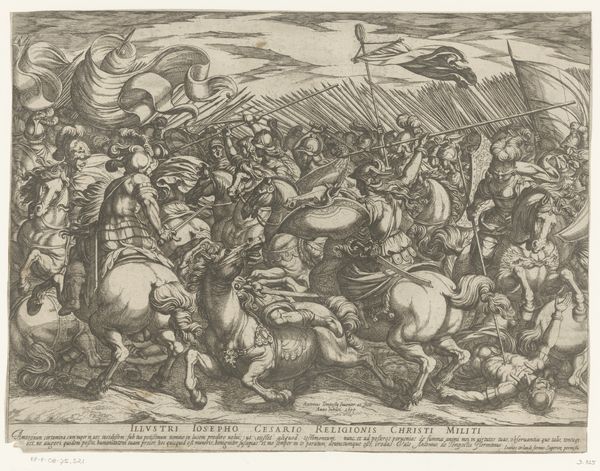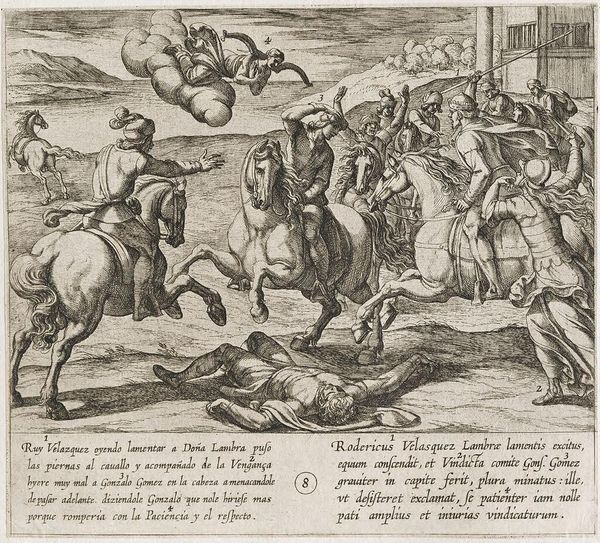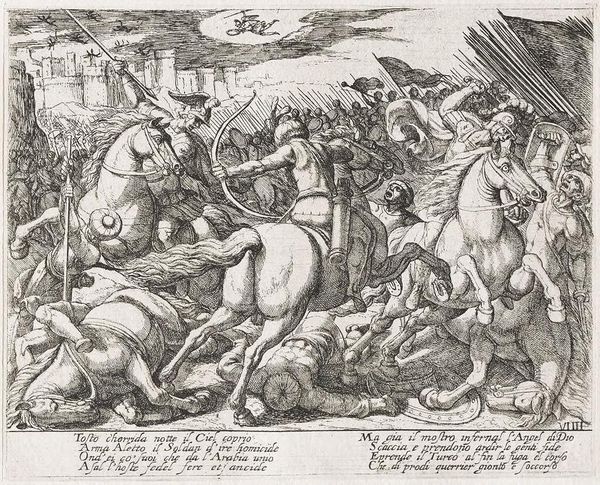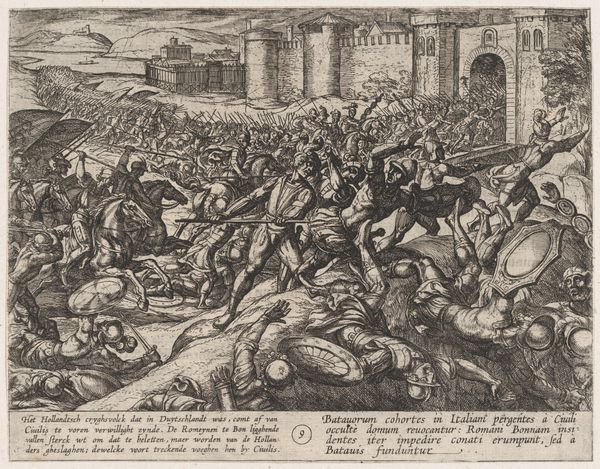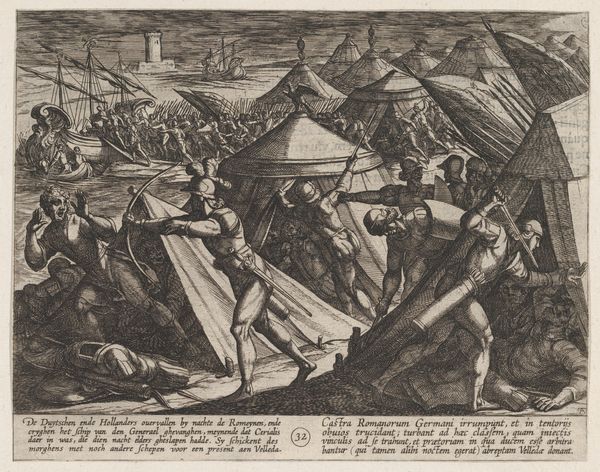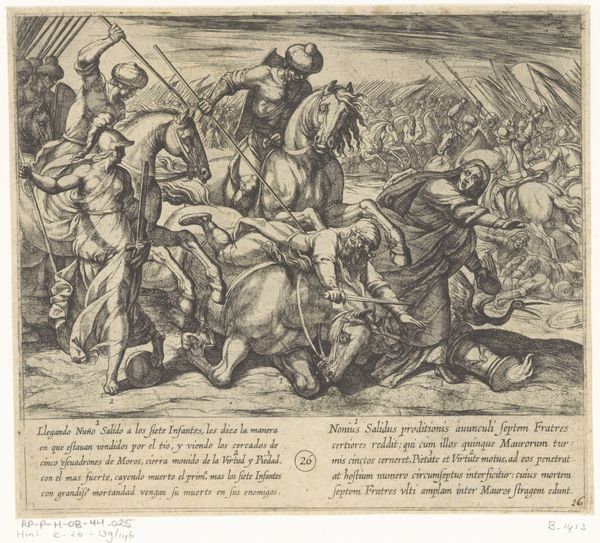
Copyright: CC0 1.0
Editor: Antonio Tempesta's "Jacob Killing Absalom" is a chaotic scene. The etching style feels frenetic, almost violent. What symbols or narratives do you see emerging from this image? Curator: The body hanging from the tree—Absalom—immediately signals betrayal and divine retribution. Notice how Tempesta uses the dense forest, a recurring symbol of the unconscious, to heighten the psychological weight of Absalom's rebellion against his father, Jacob. Can you feel the weight of patricide? Editor: Yes, the dark lines definitely amplify the feeling of dread and punishment. Curator: Precisely. Consider how the horse, often a symbol of power, is rendered wild and unruly, mirroring the instability within Jacob’s kingdom and family. It all speaks to a breakdown of order. Editor: So, the image isn't just a historical depiction, but a symbolic commentary on familial and political conflict? Curator: Indeed. By understanding these symbols, we access the cultural anxieties surrounding authority, betrayal, and the consequences of challenging established order. Editor: That’s fascinating; it makes the scene even more impactful. Curator: Visual symbols can act as powerful reminders of our shared cultural memory.
Comments
No comments
Be the first to comment and join the conversation on the ultimate creative platform.

